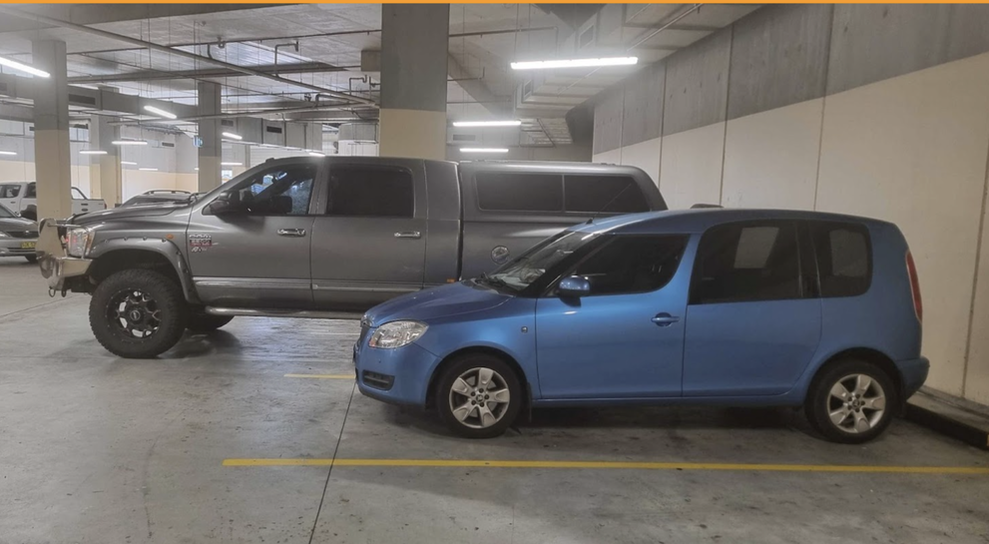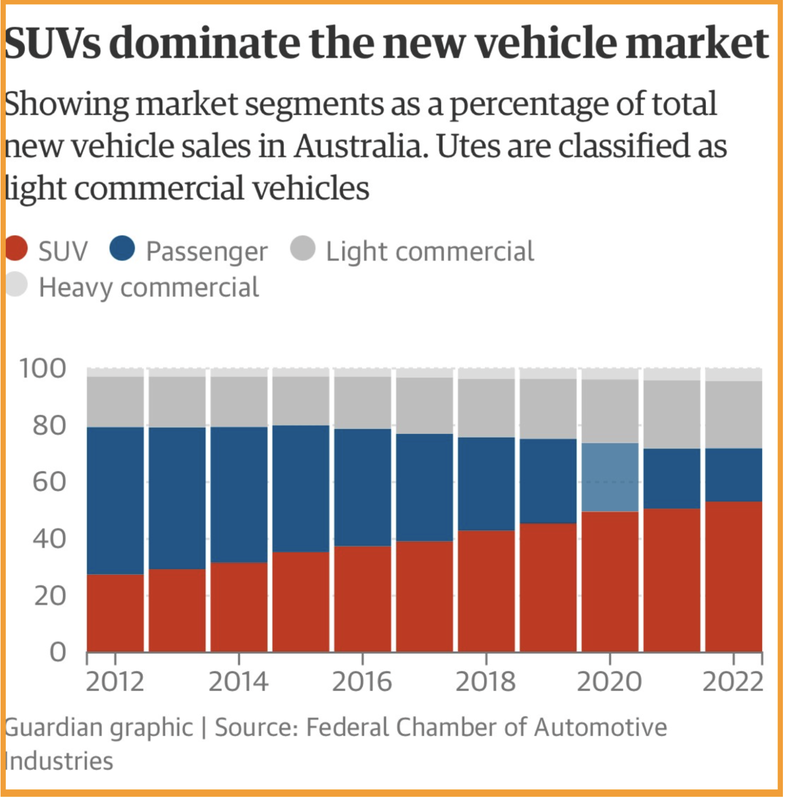|
An alarming spike in deaths across Australia is underway and no one is talking about it. In the 12 months to August 2023 there were 27% more pedestrians killed and 37% more bike riders killed in cities and towns across Australia. That includes 15 children who will never reach adulthood. NSW roads were our number one killer, with 65% more pedestrians killed in the last 12 months to August. In South Australia there were 50% more. Across all road users, deaths have increased by 8.4% in the last 12 months, with NSW up by 25% while South Australia and Western Australia are up by 22% and 16% respectively. This is a national tragedy that needs immediate action. The arms race for bigger, more dangerous vehicles "Driving is probably the most dangerous thing we will ever do, and as a normal citizen, it is the most likely way that you will kill another citizen,” says Adam Tranter, walking and cycling commissioner for West Midlands in the UK. "Cars are getting bigger, more comfortable, more protected. The more we lose sight of the fact that cars are very effective weapons when used incorrectly, we lull ourselves into a false sense of security," he said in The Guardian last month. The surge in road deaths in Australia can be attributed to increased vehicle sizes, speeding and driver distraction. SUVs and utes have worse sightlines so it's harder for drivers to see people (some are worse than a tank), it takes longer to brake (due to weight) and the bonnet is much higher (hitting a person's skull and internal organs rather than hip or leg which increases the likelihood of death). Bullbars can make this even worse. This is evident when we compare pedestrian deaths in the USA, where the number of pedestrians killed each year in traffic rose 83% between 2009 to 2022, an average increase of around 6% a year. Vehicle sizes have also increased significantly over that period. By comparison, the European Commission has a target for ‘vision zero’ with no road deaths by 2050. It’s considering banning inexperienced drivers from operating SUVs and ensuring that all driver training includes safe behaviour around people walking and cycling. It’s also difficult and expensive to purchase and run an SUV in many European countries, whereas in Australia we often heavily subsidise them thanks to a generous $67,000 tax write-off for businesses (a subsidy that only recently dropped from $150,000). Meanwhile, Standards Australia is contemplating increasing car parking spaces by 20cm in length to accommodate these larger vehicles. Photo by Better Streets volunteer Toby Thumpston at his local shopping centre The current car parking standards were established in 1993 when a new Ford Falcon measured 4.92 metres long. Today, the most popular car is the Toyota HiLux dual cab ute at 5.27 metres long – giving it less than 15cm of breathing space in average parking spots. Two-thirds of new vehicle sales in Australia last year were SUVs, 4WDs or light commercial vehicles, which include utes. Image from The Guardian
This arms race for bigger vehicles is leading to a catastrophic increase in deaths and horrific injuries. "Loosening your belt isn't the best way to resolve weight gain. We need to tackle this spike in deaths head on," says Sara Stace, President of Better Streets. “We need to stop sanitising terms such as 'Killed and Seriously Injured' which the industry simplifies to KSI," says Sara. "It downplays the devastation that people experience when their child is killed or they have to live the rest of their lives with a crippling disability. We're immunised to the 1,250 people killed on our roads every year.” But aren’t new and electric vehicles safer and cleaner? A counter argument we often hear about these big new vehicles is that they have lots of safety gear, like sensors and automated braking. However if these were truly working we’d see fatalities decreasing and clearly we’re not. Vehicle safety gear is mostly for protecting the occupants rather than people outside the vehicle, and does not ameliorate the inherent danger of military-sized trucks driving on our local streets. In addition to the fatal consequences to humans, pets and wildlife, there’s also enormous climate and biosphere impacts. The embodied emissions and other materials in two- to three-ton vehicles causes vastly more wear and tear on the roads than regular vehicles. Even electrifying them won’t solve the problem of decarbonising and reducing resource consumption. McKinsey says an EV has roughly double the production footprint of a typical internal combustion engine (ICE) vehicle. Stephen Hodge from We Ride Australia points out that “a single Tesla 3 battery is equivalent to around 147 e-bike batteries, resources that could be used to help get people mobile much more economically and save valuable resources at the same time.” And these massive batteries make them heavier and more dangerous. “EVs reinforce the car-dependent behaviour and approach to city-making that created the problem in the first place,” says Dr Catherine Knight, from Massey University in Aotearoa New Zealand. What does Better Streets recommend? Better Streets recommends three broad solutions to improve safety for people walking and cycling and get us closer to achieving Vision Zero:
The role of governments Governments in Australia have proven themselves willing to take radical action to save human lives and support public health and safety. Most notably in relation to world-leading anti-tobacco campaigns and rules (we were the first to ban smoking on flights), gun control, seat belt safety, and responses to the COVID-19 pandemic. The case of enormously dangerous cars and speeding on our roads should be no different. Governments need to urgently address the true causes for the rapidly escalating road deaths as a public health and safety emergency - and act immediately to protect lives. Our recommendations for all three levels of government are outlined below. At a national level:
For local governments:
Reference: vox.com
0 Comments
Leave a Reply. |
Archives
July 2024
Categories
All
|



 RSS Feed
RSS Feed